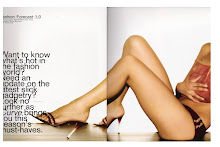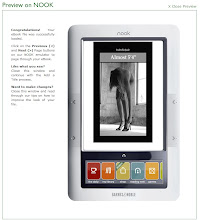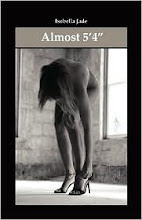I found this article about putting together a comp card interesting and it shares information also about how to get ideas for your shoots, and shares ideas about styling your shoots and how looking in magazines to get inspired is a good idea. I talk a lot about self serving and this article can inspire you to start getting active within your modeling pursuits and I know for a fact this advice and perspective will get you ahead. Modeling can be as simple as just "laughing with your friends at a local diner," and having a photographer take some photo of you, it looks like something that would be in Cosmo magazine. Although there is so much more to also consider for no matter your age or height! The more your shots look like a commercial ad, the more you work with quality photographers (I always push this!) then you will have a bigger chance when submitting to a modeling agency to start booking work on commercials and in magazines. Read ahead for the inspiration and insight!
HOW TO PUT TOGETHER A STRONG
COMMERCIAL MODELING COMPOSITE SHEET
Interview with Aaron Marcus
What is a composite sheet?
A composite sheet, or comp or zed card is the primary way commercial models get bookings. In today’s market, many agents also utilize a web site for marketing models. A comp is a collection of photographs that shows the variety of ways a model can look. These photos are key that unlocks the door to getting work. One way to get cast for a commercial modeling job is for an agent to submit your comp to a photographer or an art/creative director at an ad agency. Comps are also used at go-sees (auditions for the model).
How many photos should a card have?
The most basic composite sheet will have a head shot on one side and two or three different types of photos on the back. The most common size is 5 x 7. However, there is no set rule on how a comp must look. The size, shape, appearance and the amount of photos on a card is limited only by the model's imagination.
How do you know what shots to take?
Deciding on the image or images that fit you best might be the hardest part of the whole process of putting together a composite sheet. Ask agents, casting agents, photographers, art/creative directors and friends how they see you being cast. Consider their input, but you need to make the final decision. You must figure out how you want to present yourself to the world.
Are you best cast as the grandparent type, student, athlete, teacher, plumber, lawyer, mom? Do you look right roasting marshmallows around a campfire, sitting behind an office desk - or both?
Think about the types of photos that would best display those images. To help with ideas, look through:
$ Magazines
$ Agents' web sites (these publications show photos of the models they work with)
$ Newspaper ads
$ Junk mail
$ Photographers' showcase books (photographers pay to have their work shown in the books to generate business for themselves) One directory is called the American Photographer Showcase. Another is called The Creative Black Book. The Workbook is also a wonderful publication. These books can be found in camera stores, art schools, some public libraries, at advertising agencies and on-line.
Any suggestions on how to create interesting photos?
Since the shots for your composite sheet don't have words, make sure each photograph itself tells the story. Even better, create a photo that shows more than one story. If you want to present yourself as a mom and a businesswoman, the photo might show you walking up the steps to your house wearing a business suit, carrying a briefcase, while your child runs to meet you. Take your time and be creative in thinking of different scenarios for your shots.
Magazines are a great source of ideas. Find the magazine that will feature the look you want. For example: Parents Magazine is great for shots of parents and kids. For business images, look through investment magazines.
The ads can give you information on how to style the shot and what props are needed. Props are items placed on the set to make the ad look real. For example, if the ad is supposed to take place in an auto garage, tools, oil cans, towels, grease guns, and auto parts would be appropriate props.
The most important thing to keep in mind is to make the photos look like ads. Do not pose for the camera. Show a wide range of expression for the different photos.
Having strong pictures for your comp will give you your greatest chance for getting work.
Aaron Marcus is a full-time actor and commercial model with 1105 bookings (to date). His web site, www.howtomodel.com offers free industry information including jobs and auditions on the forum section. He is the author of How to Become a Successful Commercial Model, writes the Tear Sheet, acting and modeling newsletter and travels the globe offering his The Best Way to Get Work As An Actor And Commercial Model seminar. You can visit his site for more details.
Wednesday, January 30, 2008
Subscribe to:
Post Comments (Atom)











+copy.jpg)








No comments:
Post a Comment